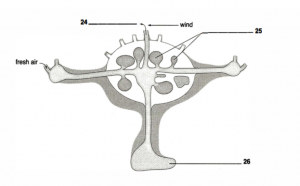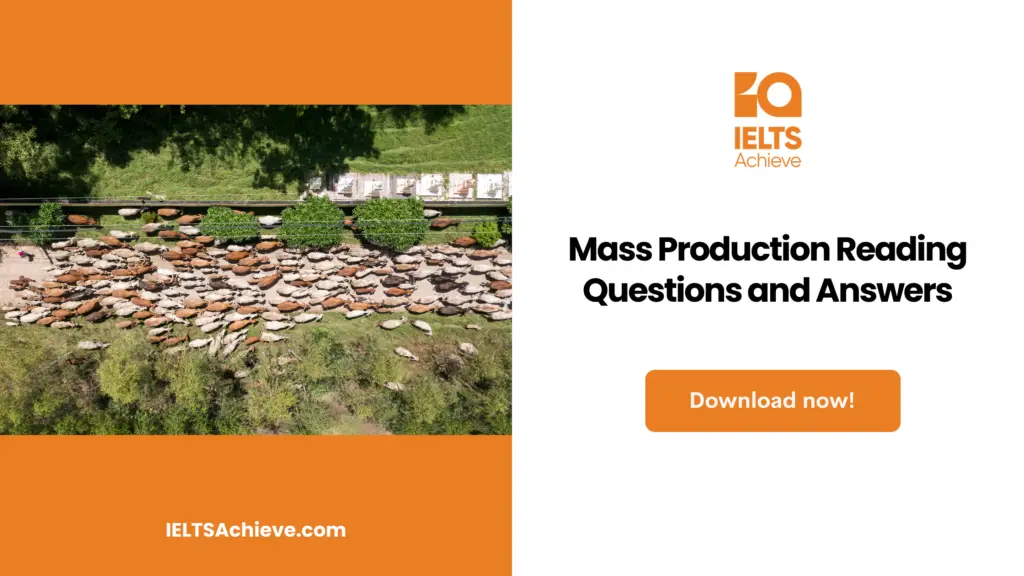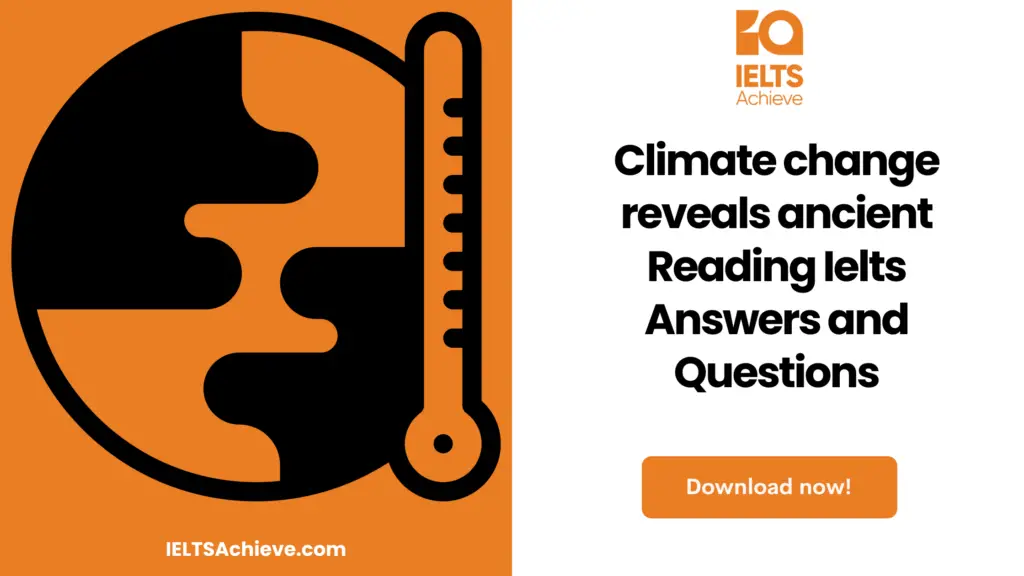The Blog post contains the following IELTS Reading Questions:
- IELTS Reading True/False/Not Given
- IELTS Reading Matching Features
- IELTS Reading Diagram Labelling
Stay informed and prepared for success – Explore our comprehensive Reading Test Info page to get valuable insights, exam format details, and expert tips for mastering the IELTS Reading section.
IELTS Reading Passage – Mutualism

Mutualism
Mutualism is an association between individuals belonging to two different species that benefit each other. There are numerous examples of this: the way flowers rely on insects to pollinate them or even how we humans rely on bacteria within our digestive system to break down our food.
One of the most visible forms of mutualism can be found in the pampas grasslands of Argentina, where organisms belonging to two different species work together not only to benefit each other but also to change the ecosystem around them. Grasscutter ants have been instrumental in shaping the landscape of the pampas grasslands – in fact, the landscape has been created almost entirely by the ants. Although they are only 1.5 cm long, they are one of the few creatures capable of shaping their own environment and one of the few living creatures apart from humans that cultivate their own food. The ants harvest the grasslands to supply their colony with grass. Each year over 0.5 tonnes of grass are harvested by a single colony. However, grass consists largely of cellulose, which the ants cannot digest, so the ants have developed a mutualistic relationship with an organism that can digest it. Deep inside the ant nests is a fungus that is able to grow on the compost produced by the grass. The fungus is unique to the habitat inside the ants’ nest and it produces edible gardens for the ants. The relationship is so successful that a single colony can consist of up to eight million ants.
One of the reasons for the ants’ success is the sophistication of their social organisation: they are all members of a single society but there is a division of labour within it. There are three main castes: the queen, the soldiers ( or majors) and the worker ants. The worker ants are further divided into categories: the minims (the smallest ants), the minors and the mediae, each with different duties. The soldier ants defend the colony against physical threats. They also clear the paths for the other workers. The mediae are the foraging ants that look for grass to cut up and take back to the nest. Once the grass has been harvested, the forager ants carry it to the nest by following a chemical trail. But often they are not alone: minims ride on them or on the grass in order to protect them from a particular species of fly that parasitises the foragers. As soon as the grass leaves arrive at the nest, the forager ants pass them to smaller gardener ants, which cut up the leaves into smaller and smaller pieces until they are small enough to feed to the fungus. They then pass the tiny pieces on to the smallest ants, which feed the grass to the fungus and tend the fungal gardens.
A very important function of the smallest ants is to keep the fungus healthy. They do this by carefully inspecting each piece of grass leaf and making sure that it is free from other fungi or pests. In fact, the mutualistic relationship is supplemented by bacteria that live on the ants and give out chemicals that kill microbes harmful to the fungus. The relationship between the fungus and the ants is so developed that the grasscutter ants are sensitive to the fungus’s reaction to different plants; if a particular plant is poisonous to the fungus, the ants no longer collect it. Waste disposal is another serious concern. Waste is collected by waste-disposer ants, which tend to be the older ants, thus ensuring that the younger ones can tend to other work. The waste-disposer ants remove waste (including dead ants) from the nest and take it underground into the deepest tunnels, where they aid its decomposition by moving it around.
Because the fungus at the heart of the colony nest is a living and breathing organism, it produces carbon dioxide – a very toxic gas. The ant nest is a masterpiece of construction, carefully made to keep air circulating in order to prevent suffocation through the build-up of carbon dioxide. The nest has two methods of air circulation. Firstly, the hot air produced by the fungal gardens at the centre of the nest flows up through a central tunnel and draws in cooler, cleaner air from the outside passages. The second method involves a series of towers at the top of the nest. When the wind blows over the towers, it draws out old air and fresh air rushes into the nest from nest holes that extend outwards from the main nest. A nest can measure up to 30 metres across, and other mounds extend away from the central nest for up to 80 metres. As the nest also dominates the underground world, often extending seven metres down, the rapid flow of air through the nest is essential to the health of the inhabitants and their garden.
Unlock your full potential in the IELTS Reading section – Visit our IELTS Reading Practice Question Answer page now!
Recommended Questions:
Renewable Energy IELTS Reading Question with Answer
Questions 13-19
Do the following statements agree with the information given in Reading Passage 2?
Write TRUE if the statement agrees with the information
FALSE if the statement contradicts the information
NOT GIVEN if there is no information on this
13 Grasscutter ants are one of a small group of creatures that use other organisms to produce food.
14 The fungus that grows in the nests of grasscutter ants is not found in any other kind of environment.
15 Grasscutter ants cut the grass into very small pieces so they can eat it.
16 Forager ants are the smallest ants.
17Grasscutter ants can carry loads much heavier than their body weight.
18 The ants never collect plants that might harm the fungus.
19 The older ants are responsible for getting rid of waste.
Enhance your skills in identifying information as True, False, or Not Given. Click here to discover expert strategies and techniques for mastering this question type in the IELTS Reading section.
Questions 20-23
Classify the following as typical of
A majors
B mediae
C minims
Write the correct letter. A, 8 or C, next to Questions 20-23.
20 take grass back to the colony
21 protect the colony from invaders
22 make sure the way to the food is clear
23 farm the fungus
Improve your performance in Matching Features questions by clicking here to access our comprehensive guide. Learn how to match specific features or characteristics with the options provided in the IELTS Reading section.
Questions 24-26
Label the diagram below using words from the box.
Write the correct letter, A-C, in spaces 24-26.

A fungal gardens
B waste tunnel
C carbon dioxide
Ready to tackle Diagram Label Completion tasks with confidence? Click here to access our comprehensive guide and learn how to accurately label parts or components of diagrams in the IELTS Reading section.
Answers
13Answer: True
14Answer: True
15Answer: False
16Answer: False
17Answer: Not Given
18Answer: False.
19Answer: True
20Answer: B
21Answer: A
22Answer: A
23Answer: C
24Answer: C
25Answer: A
26Answer: B

We hope you found this post useful in helping you to study for the IELTS Test. If you have any questions please let us know in the comments below or on the Facebook page.
The best way to keep up to date with posts like this is to like us on Facebook, then follow us on Instagram and Pinterest. If you need help preparing for the IELTS Test, join the IELTS Achieve Academy and see how we can assist you to achieve your desired band score. We offer an essay correction service, mock exams and online courses.

